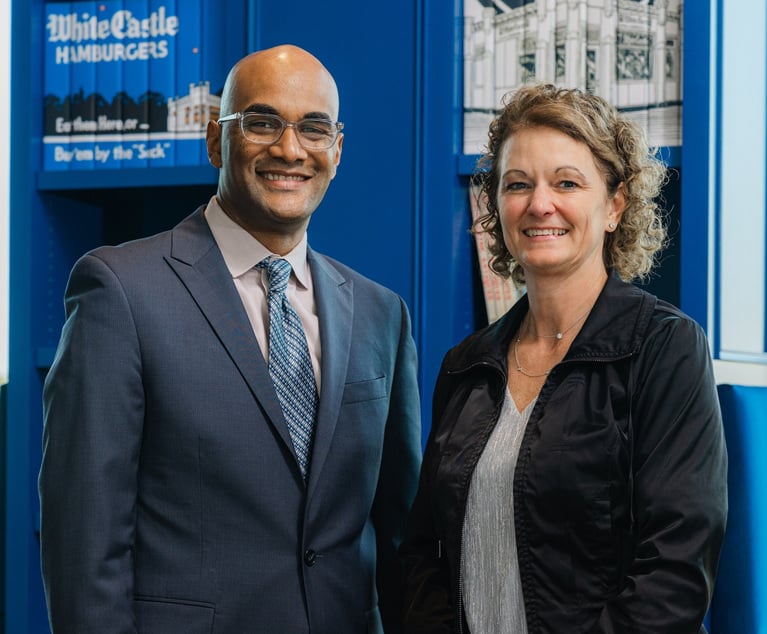Facts & Figures: 5 sets of newsworthy data
Settlement SlowdownThe number of securities fraud settlements in 2011 dropped to their lowest levels since the passage of the Sarbanes-Oxley Act (SOX),…
March 16, 2012 at 06:30 AM
4 minute read
The original version of this story was published on Law.com

Settlement Slowdown
The number of securities fraud settlements in 2011 dropped to their lowest levels since the passage of the Sarbanes-Oxley Act (SOX), according to a new study by Cornerstone Research. But while settlements reached an all-time low, the Securities and Exchange Commission (SEC) was busy filing a historic number of enforcement cases.
65 Securities fraud settlements that won court approval in 2011 (down from 86 in 2010)
$1.36 billion Total payments in those 65 settlements (down from $3.21 billion in 2010)
$19.9 billion Total payouts in 2006, the peak year for such settlements
8.6% Increase in the number of enforcement cases filed by the SEC between 2010 and 2011
$208.5 million Settlement between Washington Mutual and its investors (the largest 2011 deal in the study)

Floundering Firms
The majority of law firm practice groups fall short when it comes to generating business, cross-selling and group planning, according to an Altman Weil Inc. survey of managing partners. The solution? Underperforming firms should devote more time to leadership activities and more thoughtful planning sessions, says Thomas Clay of The American Lawyer. The mostly disheartening statistics are below:
49% Practice groups that are “very good” or “excellent” in overall performance, according to managing partners who were surveyed
63% Firms with a formal practice group planning process
14% Law firms that invested 250 hours or more per year in leadership activities
13% Firms that require mandatory leadership training for practice group leaders (among firms with 500 or more lawyers, the number was closer to one-third)

Stanford Scheme
After three years of investigation, financier R. Allen Stanford was convicted of fraud for his involvement in the biggest Ponzi scheme since the Bernie Madoff scandal. For two decades, Stanford supposedly managed funds for investors from more than 100 countries, when in reality he was using their investments to fund a luxurious lifestyle and a string of failed businesses. Here's a look at the numbers behind Stanford's Ponzi scheme:
$7.1 billion Total amount that Stanford stole from nearly 30,000 investors
$2 billion Stanford's estimated net worth before his arrest
$330 million Total stolen funds that U.S. authorities can seize from Stanford's frozen foreign bank accounts
13 Charges on which jurors convicted Stanford (he was acquitted on one count of wire fraud)
230 Years that Stanford could spend in prison if his sentences run consecutively

Jabbering Jurors
How much damage can you do in 140 characters? If you're a juror, an errant Tweet could lead to a mistrial. To prevent this, many judges are specifically forbidding social media use in their instructions to the jury, according to new survey in the Duke Law & Technology Review. And jurors may be taking these admonitions to heart—many jurors who did not use social media to discuss ongoing cases cited judicial instructions as a deterrent.
50 million Users who log into Twitter daily, according to CEO Dick Costolo
6% Judges responding to the survey who “have not specifically addressed jurors' use of social media”
60% Judges who specifically instructed jurors not to use social media, using the Court Administration and Case Management Committee (CACM) model
92% Percentage of 140 jurors surveyed who said they were not tempted to use social media during trials

Increasing Insurance
It's lonely—and potentially expensive—at the top. Fearing expensive litigation, more and more companies are upping insurance coverage for their executives, according to a 2011 Directors and Officers (D&O) Liability Survey, released by Towers Watson. Key numbers from the survey, which included 401 public, private and non-profit companies, are below:
25% Public companies that increased the limits of their D&O insurance policies in 2011
14% Private and non-profit companies that increased their D&O insurance policies
69% Respondents who received an inquiry about the scope of their D&O insurance (up from 57% in 2010)
81% Respondents who said that regulatory claims are among their top three D&O liability concerns
47% Companies that conducted an independent review of their D&O policies in the past two years
This content has been archived. It is available through our partners, LexisNexis® and Bloomberg Law.
To view this content, please continue to their sites.
Not a Lexis Subscriber?
Subscribe Now
Not a Bloomberg Law Subscriber?
Subscribe Now
NOT FOR REPRINT
© 2025 ALM Global, LLC, All Rights Reserved. Request academic re-use from www.copyright.com. All other uses, submit a request to [email protected]. For more information visit Asset & Logo Licensing.
You Might Like
View All
White Castle GC Becomes Chain's First President From Outside Family

Beyond the Title: Developing a Personal Brand as General Counsel
Trending Stories
- 1Courts, Lawyers Press On With Business as SoCal Wildfires Rage
- 2Florida, a Political Epicenter, Is the Site of Brownstein Hyatt's 13th Office
- 3Law Firms Close Southern California Offices Amid Devastating Wildfires
- 4Lawsuit alleges racial and gender discrimination led to an Air Force contractor's death at California airfield
- 5Holland & Knight Picks Up 8 Private Wealth Lawyers in Los Angeles
Who Got The Work
Michael G. Bongiorno, Andrew Scott Dulberg and Elizabeth E. Driscoll from Wilmer Cutler Pickering Hale and Dorr have stepped in to represent Symbotic Inc., an A.I.-enabled technology platform that focuses on increasing supply chain efficiency, and other defendants in a pending shareholder derivative lawsuit. The case, filed Oct. 2 in Massachusetts District Court by the Brown Law Firm on behalf of Stephen Austen, accuses certain officers and directors of misleading investors in regard to Symbotic's potential for margin growth by failing to disclose that the company was not equipped to timely deploy its systems or manage expenses through project delays. The case, assigned to U.S. District Judge Nathaniel M. Gorton, is 1:24-cv-12522, Austen v. Cohen et al.
Who Got The Work
Edmund Polubinski and Marie Killmond of Davis Polk & Wardwell have entered appearances for data platform software development company MongoDB and other defendants in a pending shareholder derivative lawsuit. The action, filed Oct. 7 in New York Southern District Court by the Brown Law Firm, accuses the company's directors and/or officers of falsely expressing confidence in the company’s restructuring of its sales incentive plan and downplaying the severity of decreases in its upfront commitments. The case is 1:24-cv-07594, Roy v. Ittycheria et al.
Who Got The Work
Amy O. Bruchs and Kurt F. Ellison of Michael Best & Friedrich have entered appearances for Epic Systems Corp. in a pending employment discrimination lawsuit. The suit was filed Sept. 7 in Wisconsin Western District Court by Levine Eisberner LLC and Siri & Glimstad on behalf of a project manager who claims that he was wrongfully terminated after applying for a religious exemption to the defendant's COVID-19 vaccine mandate. The case, assigned to U.S. Magistrate Judge Anita Marie Boor, is 3:24-cv-00630, Secker, Nathan v. Epic Systems Corporation.
Who Got The Work
David X. Sullivan, Thomas J. Finn and Gregory A. Hall from McCarter & English have entered appearances for Sunrun Installation Services in a pending civil rights lawsuit. The complaint was filed Sept. 4 in Connecticut District Court by attorney Robert M. Berke on behalf of former employee George Edward Steins, who was arrested and charged with employing an unregistered home improvement salesperson. The complaint alleges that had Sunrun informed the Connecticut Department of Consumer Protection that the plaintiff's employment had ended in 2017 and that he no longer held Sunrun's home improvement contractor license, he would not have been hit with charges, which were dismissed in May 2024. The case, assigned to U.S. District Judge Jeffrey A. Meyer, is 3:24-cv-01423, Steins v. Sunrun, Inc. et al.
Who Got The Work
Greenberg Traurig shareholder Joshua L. Raskin has entered an appearance for boohoo.com UK Ltd. in a pending patent infringement lawsuit. The suit, filed Sept. 3 in Texas Eastern District Court by Rozier Hardt McDonough on behalf of Alto Dynamics, asserts five patents related to an online shopping platform. The case, assigned to U.S. District Judge Rodney Gilstrap, is 2:24-cv-00719, Alto Dynamics, LLC v. boohoo.com UK Limited.
Featured Firms
Law Offices of Gary Martin Hays & Associates, P.C.
(470) 294-1674
Law Offices of Mark E. Salomone
(857) 444-6468
Smith & Hassler
(713) 739-1250








